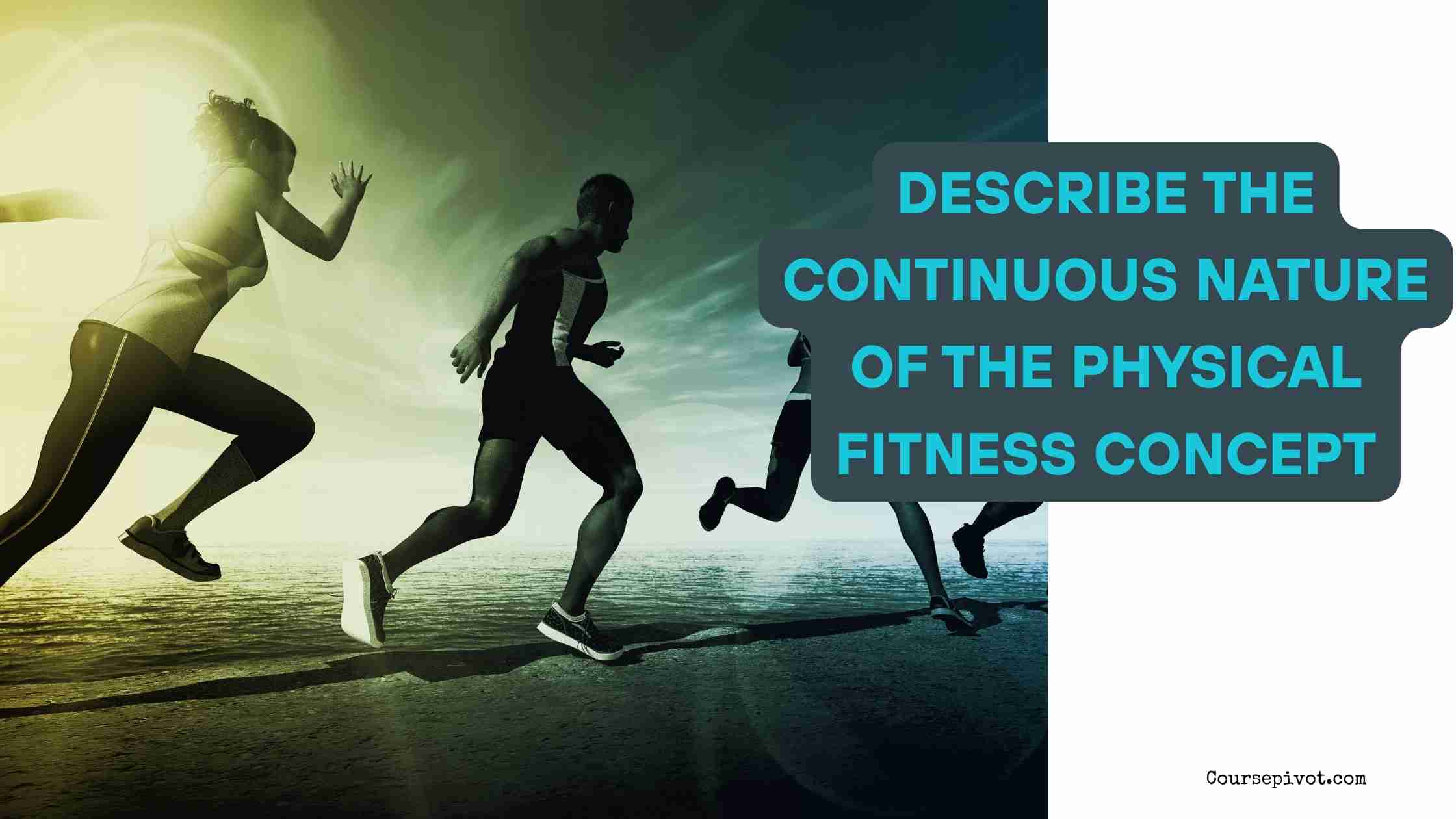
Describe the Continuous Nature of the Physical Fitness Concept
Have you ever wondered why fitness isn’t something you can “finish”? Why you can’t just hit a goal weight or run a mile in record time—and then stop?
That’s because physical fitness is not a destination. It’s a journey.
The continuous nature of the physical fitness concept lies in the fact that fitness is ongoing, evolving, and deeply personal. It’s not something you achieve once and forget. It’s something you must maintain and nurture.
Table of Contents
Just like brushing your teeth or eating well, physical fitness requires regular effort. The more consistent you are, the better your results. And if you stop? The effects slowly fade.
In this article, we’ll explore why physical fitness is a lifelong commitment, how it changes with age and goals, and why it should be viewed as a habit rather than an achievement.
“Fitness is like a relationship—you can’t cheat on it and expect it to work.”
But what exactly makes physical fitness continuous in nature? Is it our body that demands it? Our health? Or is it simply the way the concept is designed?
Let’s break it all down and understand the continuous nature of the physical fitness concept, and what that means for you—whether you’re just getting started or looking to level up.
What is Meant by the Continuous Nature of Physical Fitness?
1. Fitness Is Never Final
One of the most important things to understand is this: You can’t store fitness.
If you’re in great shape today but stop exercising for several months, your body will adapt to that inactivity. Your endurance, strength, and flexibility will decline. That’s a natural biological response.
- Fitness is perishable.
- It demands maintenance.
- You either improve it, maintain it, or lose it.
That’s the very definition of continuous.
- Read our blog on Explain the Difference Between Physical Activity and Exercise
2. Fitness Evolves With You
Physical fitness isn’t static because you aren’t static. You age. Your body changes. Your goals shift. And so your approach to fitness must evolve.
- A 20-year-old may train for strength and appearance.
- A 40-year-old might focus on stamina and joint health.
- A 60-year-old could prioritize balance and mobility.
That’s the beauty of fitness—it adapts to your life, your body, and your season.
3. The Body Craves Movement, Always
Even when we don’t realize it, our bodies are designed for motion. The continuous nature of physical fitness is built into our biology. Muscles weaken when unused. Joints stiffen. Cardiovascular health declines.
“Motion is lotion,” as physical therapists often say.
Staying physically active isn’t just a health recommendation—it’s a biological requirement.
Why It’s a Lifelong Journey
You Don’t Graduate From Fitness
Would you ever say, “I’m done being healthy”? Of course not.
So why do we treat fitness like a short-term goal?
The concept of continuous fitness is rooted in sustainability. That means choosing activities, routines, and habits you can carry for decades—not weeks.
- Walking daily
- Stretching regularly
- Strength training in phases
- Prioritizing active living
Fitness Isn’t Always About Intensity
It’s about consistency. You don’t have to hit the gym 7 days a week. You just have to keep showing up.
Even light to moderate movement, when done consistently, brings lasting health benefits. That’s how the ongoing nature of physical fitness supports long-term wellbeing.
- Read our blog on Explain the Tangible Physical Benefits of Warming Up for and Cooling Down from a Workout Activity
The Four Pillars That Make Fitness Continuous
1. Cardiovascular Endurance
You must keep the heart and lungs working. It’s not a “check once and done.” You need regular aerobic activity like walking, running, or swimming.
2. Muscular Strength & Endurance
Strength fades with time if not used. Weight training or bodyweight exercises must be a regular part of your life.
3. Flexibility
Joints become stiff without motion. Regular stretching or mobility drills are essential in the long term.
4. Body Composition
Maintaining a healthy fat-to-muscle ratio is a product of both exercise and nutrition. It fluctuates with lifestyle—so it needs ongoing attention.
Each pillar is dynamic. That’s what makes physical fitness a continuous process, not a one-time fix.
How to Embrace the Continuity of Fitness in Real Life
Start Where You Are
You don’t have to be in shape to start. You just have to start. Accept that fitness is a process. And like any process, it improves over time.
Make It a Lifestyle, Not a Chore
Find activities you enjoy:
- Dance
- Yoga
- Hiking
- Biking
- Team sports
Make it part of your identity, not just a to-do list item.
Track Progress, But Focus on the Long Game
You adapt. You grow. You adjust. That’s what makes physical fitness so personal—and so powerful.
You’re not competing with anyone else. You’re just trying to become a healthier, stronger version of yourself—every day.
So, let’s drop the finish lines and focus on sustainable progress.
“Fitness is not about being better than someone else. It’s about being better than you used to be.”
Physical fitness is continuous because life is continuous. And just like life, the more you invest in it, the more it gives back.
So whether you’re just starting out or have been active for years, keep moving, keep growing, and never stop caring for your body.
Because in the end, you don’t find fitness—you live it.



